
Donate to Innerviews
Since 1994, Innerviews has provided uncompromising, in-depth interviews with musicians across every genre imaginable. And it does that with no trackers, cookies, clickbait, or advertising.
Your donations are welcome to help continue its mission of highlighting incredible music and artists, without any commercial considerations.
Your contributions will be instantly transformed into stories and videos, and cover hosting and web management costs. Importantly, your dollars will help ensure Innerviews remains absolutely free to all visitors, independent of their ability to financially support it.
Please consider making a donation today by using the PayPal QR code below.

Nguyên Lê
The Fire of Energies
by Anil Prasad
Copyright © 2019 Anil Prasad.
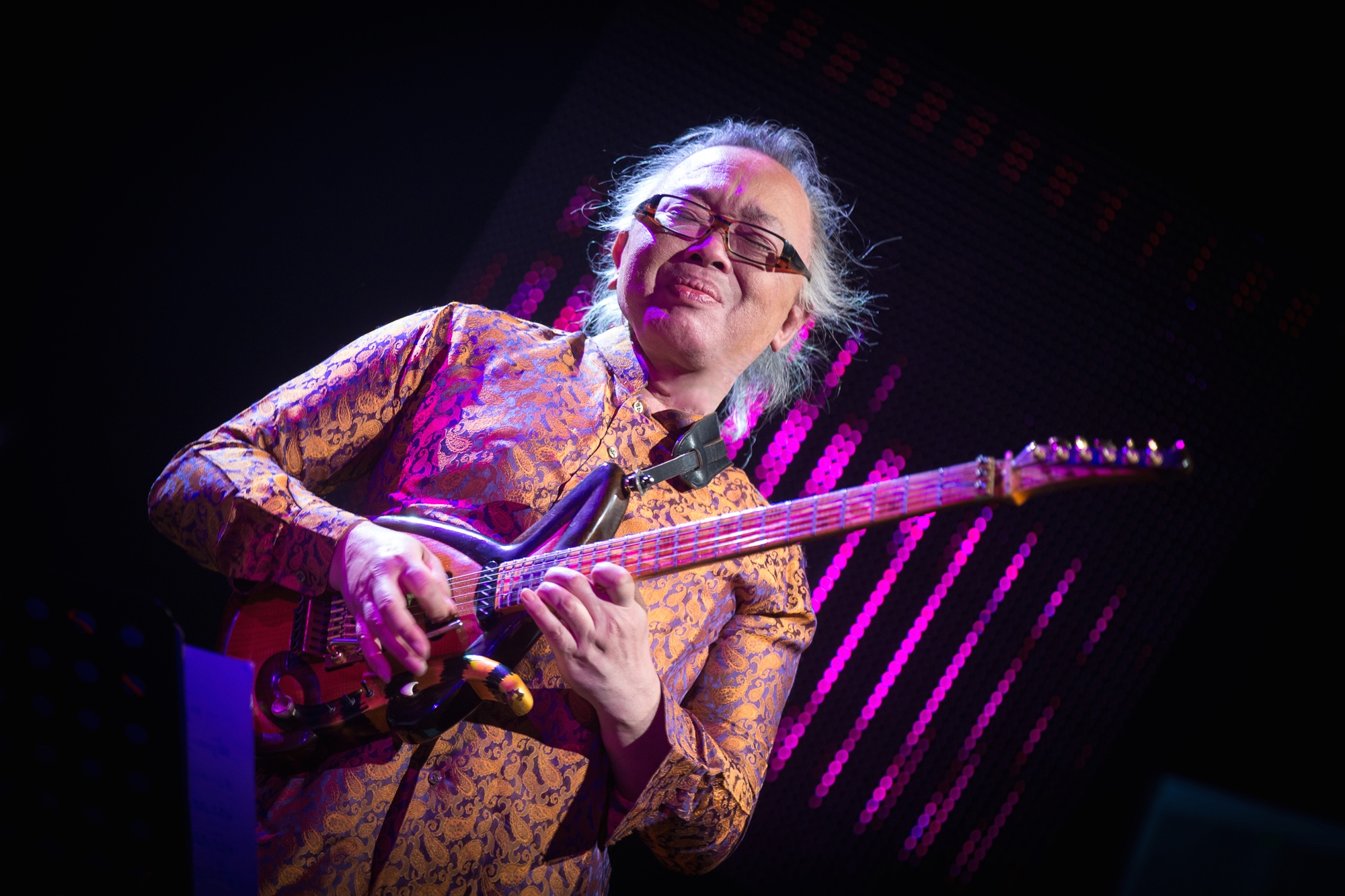 Photo: Patrick Essex
Photo: Patrick Essex
The only constant about Nguyên Lê’s career is that it’s always evolving. The Paris-born and based guitarist and composer has established himself as a preeminent voice in combining myriad global musics with Vietnamese influences in thrilling and groundbreaking ways across his 18 studio recordings. His latest releases, Streams and Overseas, continue in that tradition.
Streams is a collaboration between Lê and the worldly-minded talents of American drummer John Hadfield, Canadian bassist Chris Jennings and French vibraphonist Illya Amar. The album bridges Indian rhythmic concepts, Vietnamese phrasing, East Asia-inspired melodic shifts and accents, and rhythms from Maghreb.
The recording is one of the most ambitious in Lê’s already boundary-breaking ouevre. And while it features many shifting time signatures and rhythmic complexities, the album doesn’t stray from its core mission to deliver memorable melodies and maintain compositional integrity.
Overseas is a recording created for Nouveau Cirque de Vietnam, a Vietnamese circus-based performance project involving dance, acrobatics and music. It’s a collaborative effort with the show’s creator and director Tuan Le, also known for his work with Cirque du Soleil. It’s one of Lê’s most musically-diverse releases, incorporating elements like hip-hop, reggae and electronica into his already wide-spectrum pieces.
In addition to serving as a soundtrack for Nouveau Cirque de Vietnam, Overseas offers Lê’s musical interpretation on the evolution of rapidly-modernizing Vietnam and the questions of identity that accompany those changes. To tell those stories, the album includes a wide variety of performers, such as Illya Amar, Cuong Vu on trumpet, Chris Minh Doky on bass, Ngô Hồng Quang on vocals, dàn nhi fiddle and dàn môi jaw harp, and beatboxer Trung Bao.
In addition to exploring the creation of Streams and Overseas in this conversation, Lê discusses the making of Hà Nội Duo, his 2017 recording with Ngô Hồng Quang also focused on combining Vietnamese roots with Western elements. He also offers his thoughts on contributing to Rumah Batu, an expansive 2018 jazz-rock album by Indonesian keyboardist Dwiki Dharmawan.
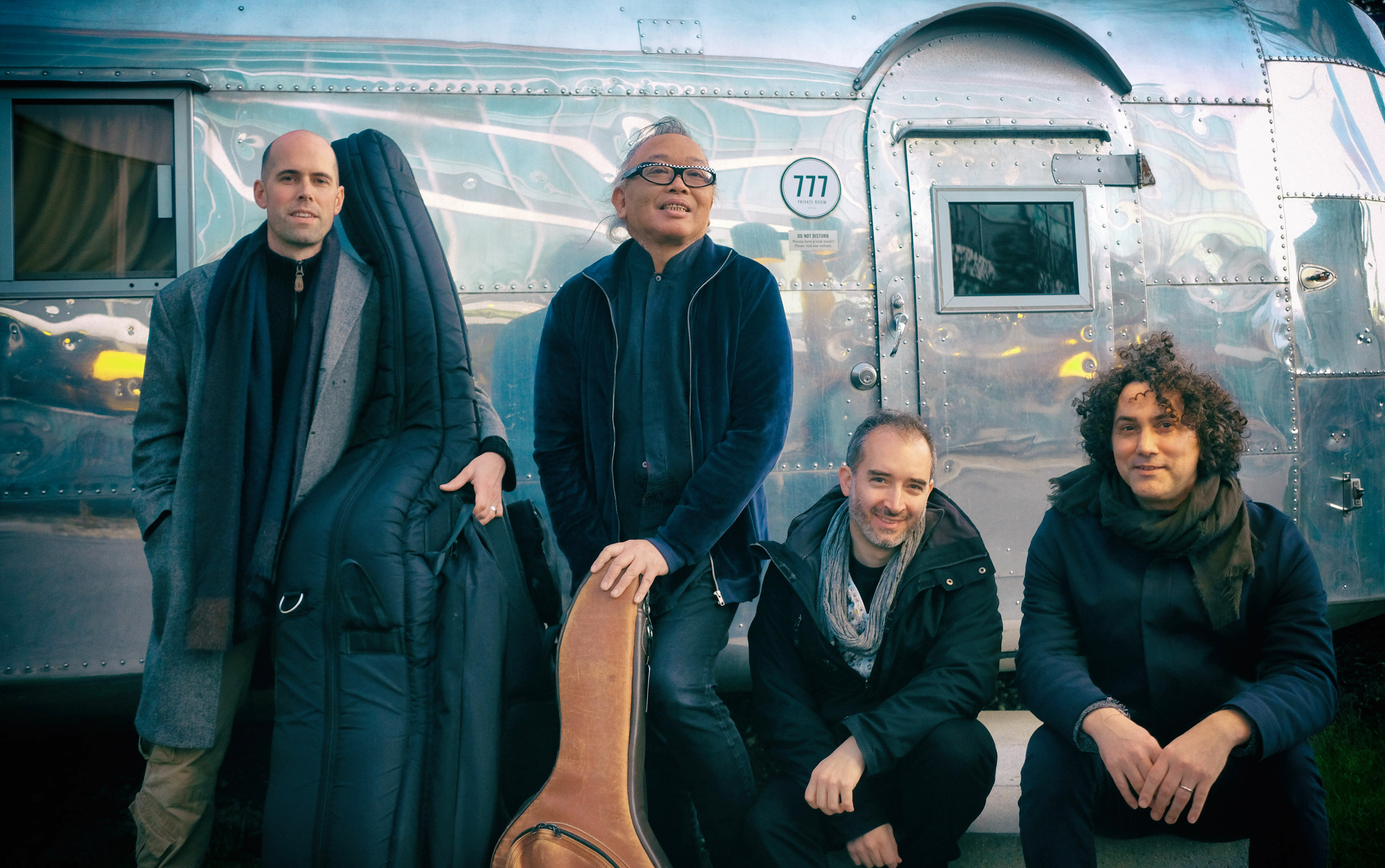 The Streams Quartet: Chris Jennings, Nguyên Lê, Illya Amar, and John Hadfield | Photo: Victor Feld
The Streams Quartet: Chris Jennings, Nguyên Lê, Illya Amar, and John Hadfield | Photo: Victor Feld
Describe how the Streams quartet came together.
Every album of mine is kind of the contrary of the one I did before. Every album has its own story. It's like a book in which I can't say all the things at the same time. I have to focus on the direction I choose at the start and fully develop the initial concept. After recording Saiyuki, Songs of Freedom, Celebrating the Dark Side of the Moon, and Hà Nôi Duo, I wanted to dive into a small group that was not especially Vietnamese, not obviously ethnic and not typically electric, heavy or loud. After doing many tribute records and writing music "around" other musics, I wanted to write my own compositions. Therefore, Streams is continuing the path of my older albums like Miracles, Zanzibar, Bakida, 3 Trios, and Walking on the Tiger's Tail.
This quartet is also a great symbiosis of musicians, human beings and artistic personalities. I’ve known Illya Amar since he was three. He's actually my stepson and I saw him growing up and becoming a musician. Throughout these years, he has been intimate with all the aspects of my music and is now part of several of my bands. Streams is the record in which his talent and taste are the most showcased. I found that his instrument fits very well with my guitar and my writing. The transparency of his timbre provides a great light and air to my fleshy sounds. The harmonic depth of the vibraphone gives a special sound to the band. It's not piano or synth.
I’ve known Paris-based Canadian Chris Jennings for over 10 years and we have a very close relationship through the many bands of mine he was part of. This is the first time he’s on one of my records. He offers such solid foundations which are rare to hear in funky grooves for an acoustic bass player. At the same time, he makes every bass line sing. He introduced me to John Hadfield from New York and together they're the perfect pair to be my rhythm section. They can read and play the complex music of Streams perfectly, but with a jazz background which will always bring deeper freedom and identity. All three also have ethnic musical experiences and knowledge that make them understand my music immediately.
How does Streams reflect the evolution of your approach to integrating music from across the world?
Streams is more "jazz" in my most personal and open definition of the word, which of course brings back my numerous inspirations from across the world. I started "world jazz" projects in 1996 with Tales from Viet Nam and in 1998 with Maghreb & Friends. Integrating jazz and world music has been a long process. First, there were arrangements of traditional tunes. I like to say it was about "writing music on top of other music that doesn't need me.” Writing was almost still jazz or Western-based in terms of re-harmonizations and counterpoint, but also in the guitar playing, in which I tried to apply to my instrument all the sounds and phrasings I learned.
The next step was starting to write tunes as if I had become part of the people I was getting inspired from. In that situation, I wrote several Vietnamese melodies for Huong Thanh. But the example I like the most is "Rijal Allah" on Karim Ziad's Chabiba album from 2012. I wrote that song deciding that I was Algerian, rooted with those typical rhythms and melodies. Karim liked it very much, added Arabic lyrics and recorded it on his own album as if it was his own song. As much as I love the idea of playing Hendrix from a Vietnamese point of view, I love the idea of having my music re-appropriated by an Algerian musician. I learned so much during all these encounters with ethnic musicians.
Now, I want to bring this to light, but sometimes not in the most obvious way because each cultural idiosyncrasy has melted into my own voice. Every tune on Streams has some inner ethnic inspiration. There are lots of Indian rhythm concepts that I borrowed and applied from my friend Prabhu Edouard. Streams has many Indian and Vietnamese phrasings, oriental melodic shifts and accents, rhythms from Maghreb, and also unknown references to imaginary traditions. Streams takes inspiration from Claude Debussy and Béla Bartók, because they are masters of the integration of folk elements in their own composing, eventually resulting in their utterly unique and distinctive music.
Every musician on Streams also has experiences with musical cross-pollination. What unique musical conversations does that allow you to engage in?
An example is "Sawira," which is a tribute to the Essaouira city in Morocco where I played last in July 2018 with Gnawa musicians. It was an epic concert in a city loved by gods. The guitar solo rhythm is based on a Maghreb clave that I learned from Karim that we call "Taktouf." For a Western musician who has not learned this clave, it's very difficult and results in lots of disorientation because there is never an obvious downbeat, only syncopations. Illya, Chris and John have played and practiced that rhythm for a long time, so it came out great right from the first note. A modal feeling is also something jazz musicians don't have naturally. If there are no chord changes, like in "Coromandel," they can get bored, play too much or play inappropriately. That’s not the case with the Streams group.
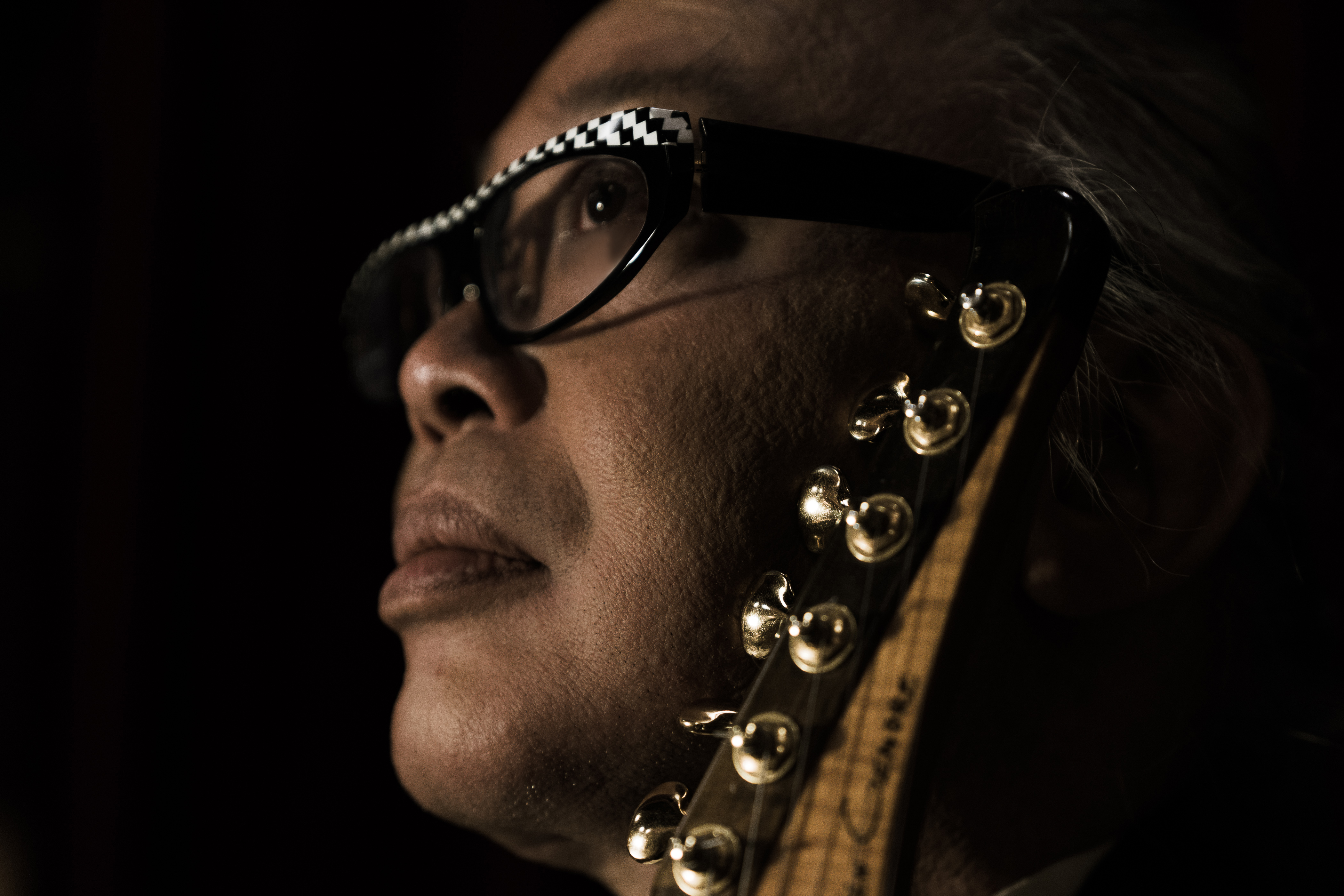 Photo: Masha Mosconi
Photo: Masha Mosconi
You believe jazz is the best music for establishing cross-cultural dialogs. What makes it so malleable as a genre?
One essential inherent experience of the jazz I play is learning to be open minded and have open ears. Because it's based on collective improvisation, jazz is about listening to the other and reacting and adapting your musical speech to the other on the spot. This essential dialog and interplay dimension makes the jazz musician the most empowered for cross-cultural dialogs. I've seen so many of those failing because even if everybody plays great, few are listening to the other because they have not been trained to. I've also seen many situations in which the old traditional master stays the same, and the only one adapting is the jazz musician. So, the dialog is only in one direction, which can work sometimes. This is changing with the new generation of traditional musicians who have learned to open their ears to the other world and go beyond what they’ve learned without neglecting it.
How do you come up with collaborative concepts?
I pretty rarely go to other gigs because I have so much work doing my own music. I listen to what my friends say. I’m curious about what my friends post on Facebook and when I hear something I like, I go deeper, surfing the links. Sometimes I look for something very specific and in the end I get to something I’m even happier with, which changes my first direction. Meeting one musician can provide the spark to start a new project, to initiate a new idea or to realize an idea that I was dreaming of before. Examples include Prabhu Edouard with one of my other bands Saiyuki and Ngô Hồng Quang with Hà Nôi Duo.
Tell me how the title Streams reflects the group's vision.
Streams of very different cultures are changing the world and we want our music to acknowledge and express it. When different cultures respect and learn from one other, beauty and friendships can emerge. In that sense, jazz is the best music for that, because it has always been the most adaptive and open form of music. A new world of inspiration is opening between tradition and modernity, East and West, and North and South.
Describe the creative process that informed the compositions.
Each tune has a different story, but many stories within the Streams album gravitate around rhythm. “Subtle Body” is a song with zones of different time signatures following each other seamlessly. “Bamiyan” is about subdivisions, groupings and equivalences. It has a cell of three with a Gnawa feel multiplied by five beats, equaling 15, but the bass cycle is two bars, meaning 10 beats. Sometimes 15 gets divided by three bars of five beats. And at the end, a big three emerges with quarter notes instead of eighth notes, and a half-time pulse, but with a double-time ride.
Streams’ music is some of the most difficult I’ve ever written, mainly because of rhythm. I always like to challenge myself and write music that is too difficult for me. This is how I improve. But it’s always the melody which keeps the song away from being just mathematical. For instance, “Mazurka” has a nice story. I learned that word from playing with West Indies musicians from my Ultramarine band in the ‘80s. It’s a dance in 3/4 with a special clave. I discovered later that this music was brought by the French colonials in Martinique and that they learned that dance from Polish music—Chopin being the most famous influence. My tune is not West Indies-sounding and I don’t use their clave, but it has a romantic melody followed by strong rhythmic development with different subdivisions, or multiplications of the three-cell, which could be more African. “Mazurka” depicts the journey of cultures, and how cultures transform themselves when they travel.
John Hadfield had a particularly significant influence on the sessions. Describe his input.
John has a real jazz background but also a deep love for indigenous traditions. He has traveled extensively to India, Peru, Mongolia, the Middle East, and Indonesia to learn the rhythms and instruments of each of these cultures. He also has a quality which is so precious when you’re a band leader and a composer, which I’ve found in the best American musicians I played with: professionalism. That means he is totally serving and carrying the music you propose to him. All of this to say that it’s a pure joy to be working with him.
What do the words funk and swing mean to you within music that has Vietnamese inflections?
With the risk of seeming ethnically incorrect, I’ve always said that rhythm was the weak side of Vietnamese traditional music, compared to Indian, Indonesian or Korean music. That’s why I’m working so much to push things on the Vietnamese side. Unsurprisingly, the most groove-based music in Vietnam is trance music and some music from ethnic minorities. Vietnamese music is so much about melody, emotion and expression. So, if there’s some funk and swing, it’s likely coming from somewhere else. It’s not always easy to insert foreign rhythms in traditional pieces. The song has to allow it. I was happy to bring a funky, swingy groove to “Weaving & Awaiting” from the Fragile Beauty album with Huong Thanh, and West Indies percussion, grooves and vocals on the work song “Heave Ho!” from Mangustao, also with Huong Thanh. You’ll also hear 5/4 meter on “Chiec Khan Pieu” from Hà Nôi Duo. The idea came when I figured out that the melody was working with cycles of five bars. So, instead of doing five bars of 4/4, I’m doing 4 bars of 5/4.
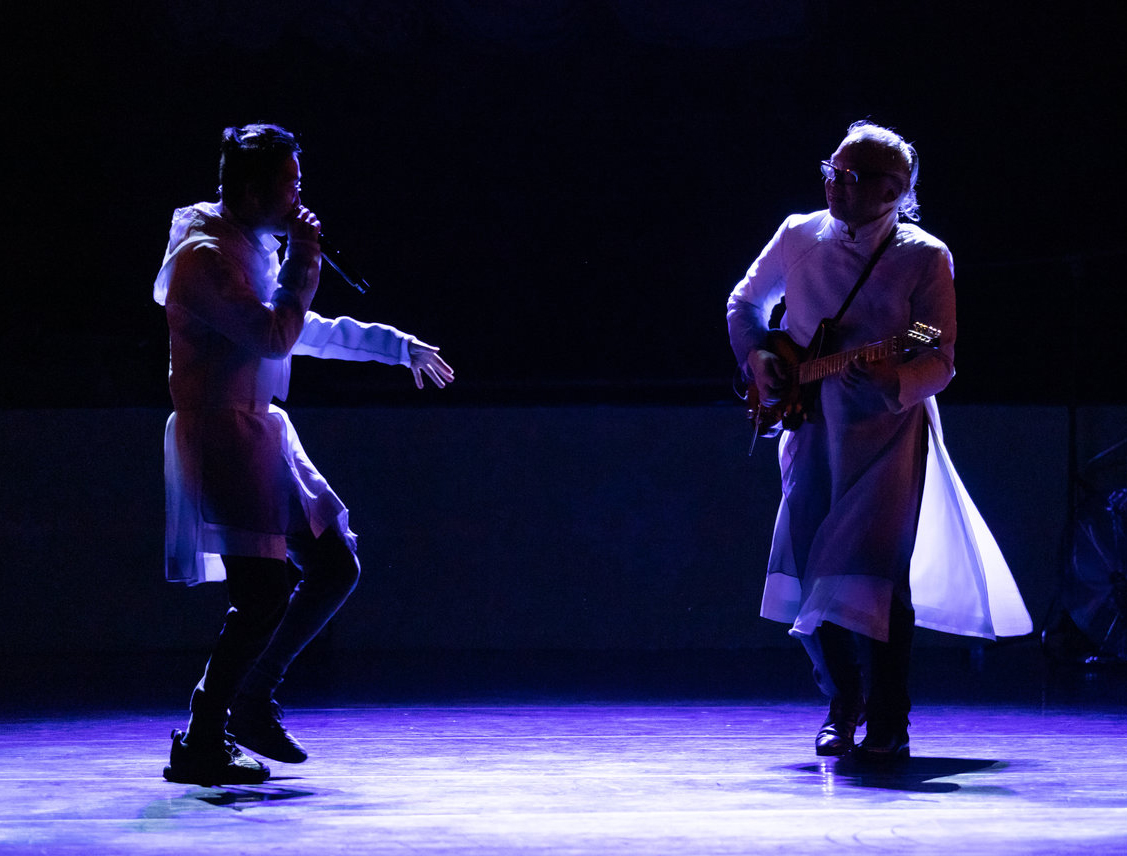 Trung Bao and Nguyên Lê during a performance of Overseas | Photo: Phuc Hai
Trung Bao and Nguyên Lê during a performance of Overseas | Photo: Phuc Hai
Tell me about the vision that informs Overseas.
Starting in April 2015, I was offered carte blanche by the Musée des Confluences in Lyon. After several projects—three with Saiyuki about Vietnam, India and Japan, and one with the Korean traditional band Baraji—I proposed a collaboration with Tuan Lê, a circus stage director based in Ho Chi Minh City. I’ve admired Tuan for many years because for me he’s responsible for one of the best artistic creations made in Vietnam today: the New Circus from Vietnam. It has three shows: Lang Toi - My Village, AO Show and Teh Dar. Those shows are very successfully touring all over the world, delivering contemporary points of view on what could be the soul of Vietnam. I wanted to put my sonic world side by side with his visual space. I also wanted to incorporate my emigrant point of view with his native inspiration, all of this revolving around the axis of Vietnam, what it has been, what it is now and where it comes from.
A development of this concept is to cast artists who are Vietnamese, from near to far. Some are living in Vietnam and others across the gigantic diaspora of Vietnamese people all over the world. For me, it’s another step in the quest for identity which has driven my work since my first album Miracles in 1989. The question “Am I Vietnamese?” is no longer relevant. I am Vietnamese. So, now let’s see how my culture has been transformed by history and migration.
“Overseas” is not only a word designating foreigners and their faraway lands. “Overseas” is also a process which has seen a culture migrating and people being transformed by this migration. Some lose the roots of their parents and others reinvent their own universe with that memory in mind. Of course, those who know me can find again the themes that have nourished my inspiration for many years. They are very autobiographical. But at the same time, I believe that many people can recognize themselves in my story. It’s the story of every man and woman who has been shaped by migration.
Describe how the eclectic mix of musicians you chose helped you realize this vision.
The process of constructing the show was pretty long and complex. The collaboration with Tuan Le was not easy because of the geographical distance, but also because he has completely different ways of working and composing for a stage performance. We started with many improvisations on both sides, involving music, dance and circus elements. We were experimenting a lot. When I understood the picture of each artist, I started to write a suite in which everybody could have and develop their own space. Then I proposed the score to everybody so they could choose what could fit the best with their inspiration and talent. In fact, it’s the music which gave the scenario to the show. I feel my music contains many pictures that are waiting to be released visually and in the body. This project is the perfect place for this elaboration. Tuan chose the dancers and circus performers, I chose the band.
Ngo Hong Quang is my Hà Nôi Duo album partner. Since the recording in 2017, we have performed many times and now we have a very strong and immediate understanding. He’s the only musician in the band who relates genuinely to the tradition, having learned all of it at the Hanoi Conservatory. At the same time, he’s totally modern and open-minded. I know he can play everything I ask or write for him. Alex Tran is hybrid-minded like his drum set—a mix of Western and Arabic drums that he usually plays with his hands. Like me, he has learned a lot from playing with African and West Indies musicians. He knows what groove means. Illya Amar, my stepson who we discussed earlier, knows my music inside out. Today, he has his own voice and is a brilliant companion for many of my musical experiences.
Maybe the most interesting member of the band is the fantastic beatboxer Trung Bao, who was 19 when I called him after long research on Internet. I was looking for a Vietnamese creative bass player but found him instead, because he posted a video on YouTube called “Bass Cannon” in which he does crazy bass noises together with drumbeats with his mouth. I discovered he was also a very creative computer graphic designer, studying in Portland. He had very few experiences playing with musicians, so had to learn many things with me, especially keeping a steady tempo and understanding complex cycles and odd meters. Calling him out of nowhere was a big bet which I wanted to make. It opened unexpected territories and brought a super-cool freshness and contrasts to the work because he’s so young and talented. Even though he was born in Hanoi and raised like a genuine local, he didn’t know anything about his traditional music. He’s another symbol of what Vietnam is today—young and talented, forgetting his roots and then coming back to them later. This is also a great feeling I have doing this Overseas project. I united very diverse artists coming from all over the planet with Vietnam as the only link. I feel they rediscovered their own roots and weighed the treasures they have inside themselves. It’s a very warm feeling, since I’m coming back to Vietnam to perform, collaborate and be part of the Vietnamese artist community, showing they can be proud of themselves in front of the world.
Overseas incorporates hip-hop, reggae and electronica, which are elements new to your particular mix. Tell me about your interest and approach towards integrating them into this project.
I’ve always loved those elements. They were just waiting for the right moment to show up in my music. The hip-hop element was of course favored by the conjunction of artists like beatboxer Trung Bao and the hip-hop dancer Hong Thai. Other elements like reggae and electronica were developed because of the relationship to the visuals, which onstage needed less jazzy licks and more colors, ambiences and spirited vibes.
Many people will experience Overseas in an audio-only context. Discuss how the ambitious scope of the show translates into album form.
I do hope Overseas will be able to tour the world like the New Circus from Vietnam does. Even if it’s the most expensive project I ever do, I know there are venues which can welcome us. Like all Vietnamese people, we can do it with a great sense of adaptation. At the same time, I’m experiencing that sometimes being known as a jazz musician may not be the best hat when you want to present and sell that kind of project. Circus and theater involve totally different markets and promoters. Well, that’s the story of my life—always beside the hole and never inside of it, always multiplying tags and looking for something else.
When I decided to make an album with the music that I wrote for the stage performance, I had to re-insert elements that I purposely left behind because of the interplay with the dancers and circus people. So, there was no more simplification and I brought back complexity which excites the ear and the listener’s brain. Many things happen on the rhythmic and cyclic side, even if it may not be obvious. An example is the beatboxer playing a cycle of five bars of 4/4 while the drummer is playing a cycle of four bars of 5/4—and at the end, we’re all together.
Inviting Cuong Vu and Chris Minh Doky was of course something special for the album. Their jazz solos were very welcome. But traditional instruments are also more showcased on the album, for which I went to Vietnam to record several guests on zither, bamboo flute and bamboo percussion.
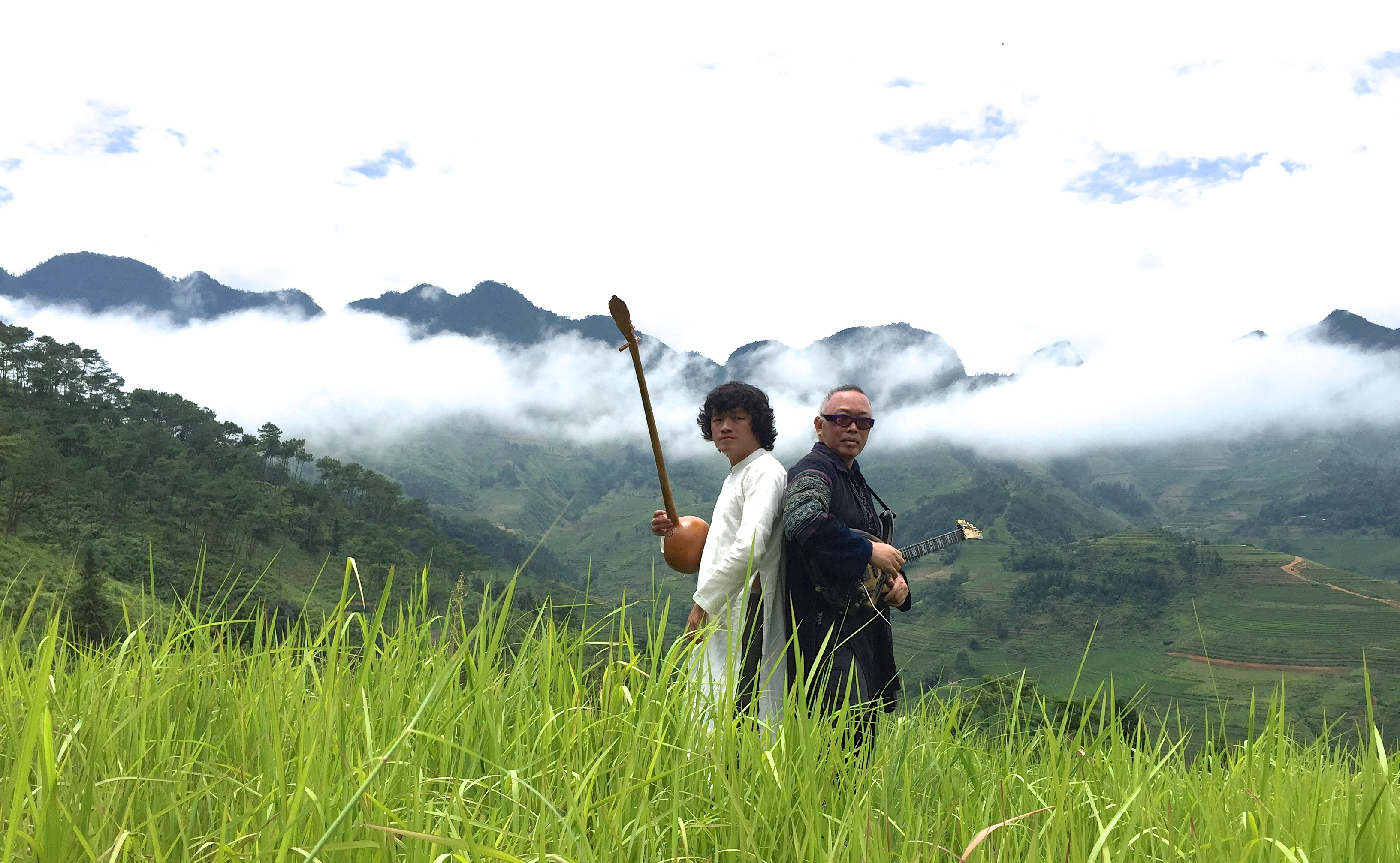 Hà Nội Duo: Ngô Hồng Quang and Nguyên Lê | Photo: Dominique Borker Reflect on the making of Hà Nôi Duo and how that album uniquely combines so many world views, while simultaneously retaining a Vietnamese perspective.
Hà Nội Duo: Ngô Hồng Quang and Nguyên Lê | Photo: Dominique Borker Reflect on the making of Hà Nôi Duo and how that album uniquely combines so many world views, while simultaneously retaining a Vietnamese perspective.
Hà Nôi Duo started with me meeting with Ngô Hồng Quang. Before the duo recording, we did many concerts with him as a guest of Saiyuki. He’s not only a very talented traditional musician, but he’s young, which means open to all experiences. Everything seems possible because he’s an open-minded virtuoso. For me, as composer and producer, it’s a great feel, because this is where tradition shines. We compose new pieces as if we were extending the traditional repertoire. I wrote “Five Senses” based on one Gnawa pentatonic scale and a difficult rhythmic switch from five to six beats. But the melody can sound totally traditional. I was so happy to play this tune in Hanoi with my traditional musician friends on bamboo flute, zither and fiddle. It sounded genuinely Vietnamese.
You recently established the Dream Weavers trio with Gavino Murgia and Mino Cinelu. Tell me what you’re able to explore within its chemistry.
This trio started after a proposal from Gavino Murgia, a great musician from Italy. He’s a young and skillful jazz saxophonist, and at the same time a genuine Sardinian traditional musician, playing launeddas, which are polyphonic circular-breathing bamboo pipes, and singing the bass part in the tenor vocal groups as well as throat singing. The great thing about this trio is each of us has a very distinctive identity serving something we can still call jazz. Everybody knows the strong and natural Caribbean colors Mino brings whenever he plays, through his rhythms and his Creole singing.
I started to work with Mino on my Three Trios album from 1997, when I was looking for a percussion player who could fully endorse the role of a drummer. We’ve remained in contact since and we’re always talking about playing again each time we met. Gavino’s proposal came at the perfect moment.
This is a very democratic group in which everyone has an equal place and brings his compositions. Structures are very open with lots of collective improvisations which are never the same each night. You need to be creative all the time and keep your attention on every detail the other is playing in order to answer and contribute on the spot. The special thing is that there is no bass player, which means that this role is taken by each of us when needed. It can be Gavino’s incredible throat singing, Mino’s Wavedrum which has great lows and sub-basses through bass amps and loopers, or me playing bass parts with an octaver. I do this a lot in fact these days, especially since I found a great sound for that. I love playing bass. I played a lot of bass guitar in my early years and learned a lot about being in the rhythm section. The Hà Nôi Duo and Overseas bands have no bass player, so here I am fulfilling that role. I think we have a great rhythm section with Mino. It’s a massive joy and big responsibility to play bass with such a groove master.
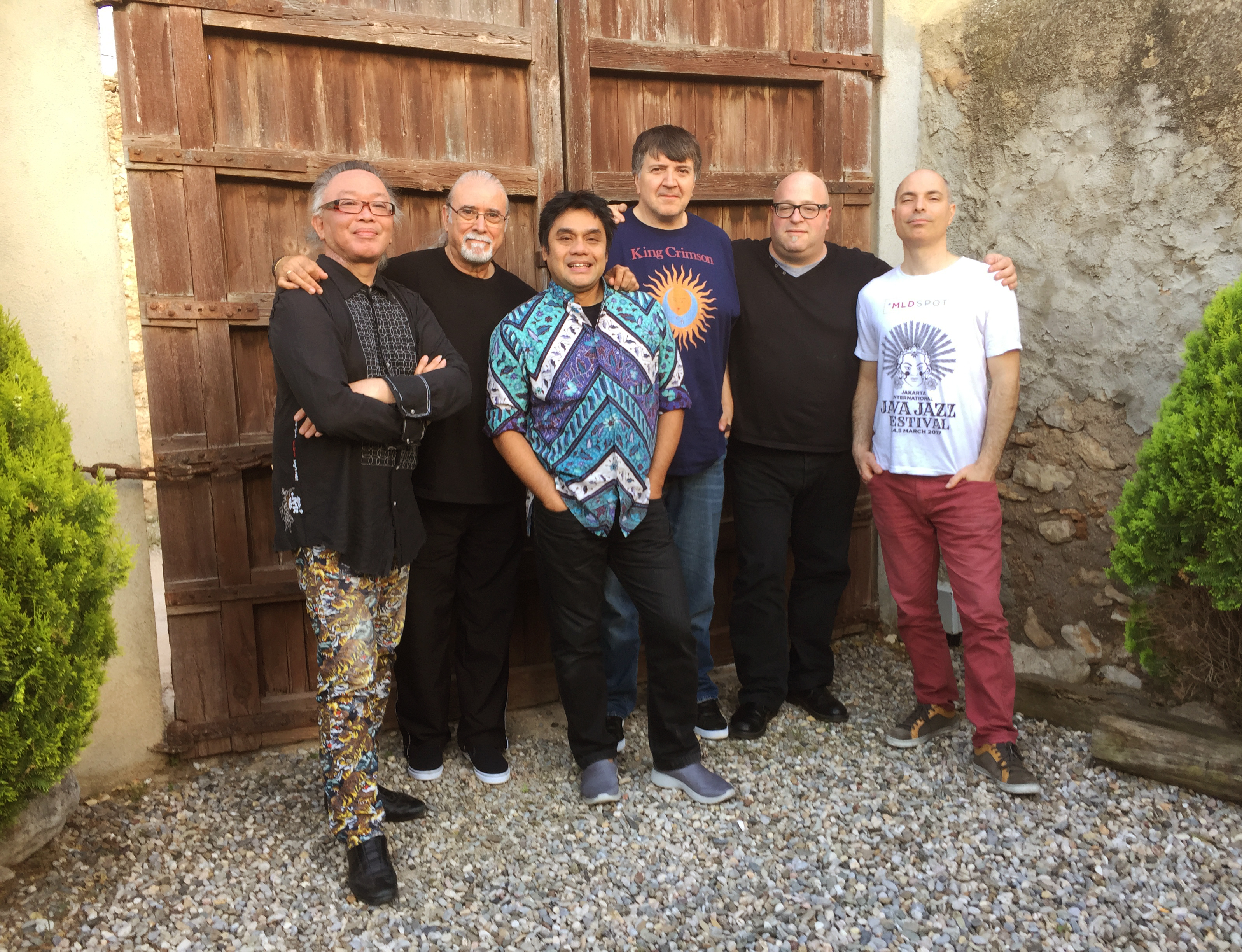 The Rumah Batu team: Nguyên Lê, Carles Benavent, Dwiki Dharmawan, Leonardo Pavkovic, Yaron Stavi, and Asaf Sirkis | Photo: Xavi Parcerisas
The Rumah Batu team: Nguyên Lê, Carles Benavent, Dwiki Dharmawan, Leonardo Pavkovic, Yaron Stavi, and Asaf Sirkis | Photo: Xavi Parcerisas
How do you look back on contributing guitars and soundscapes to Dwiki Dharmawan's Rumah Batu album from 2018?
Dwiki’s album was made through the great input of Leonardo Pavkovic from MoonJune, a real music lover and producer who connected us together. Dwiki’s compositions were kind of loose, so everybody could find their own space and be part of the whole sound. We recorded as a quintet, so the ethnic musicians were overdubbed, except one tune we recorded with an ethnic backing track. I had the pleasure to do a little tour in May 2018 in Indonesia with his band. Dwiki is a real hero in his country. I’d also love to do a gamelan project in Indonesia.
What collaborations or directions would you like to pursue that you haven't yet?
I have lots of projects in mind: a solo guitar album; a jazz standards album with ethnic musicians; an ambient textural album and a world groove album—both without many guitar solos; a symphonic or chamber orchestra electric guitar concerto; a symphony for an orchestra with only ethnic instruments; and an Asian hardcore rock band. Also, I haven’t worked much with South American musicians yet. I should also do something with music from the Indian Ocean, including Madagascar, Mauritius and La Réunion. I also love to discover new young talents and bring them into my music. One recent idea is about creating my own music school in Vietnam. Let’s see how this idea evolves.
How are you handling the very difficult economic shifts that have occurred in the music industry in terms of musicians being able to monetize their work?
I have never done music only for earning money. I never made plans for my career and business goals. I have the chance to follow my passion and to have my passion follow my dreams. Unlike many friends, I don’t teach regularly—just because I have no time for that. It’s true that income has diminished. You can forget about earning something with records when doing not commercial music. Touring and creative commissions from museums or festivals have been my main income, plus the great unemployment system that France still has. If you have enough proof of official gigs, you get paid for the days when you’re not working and that is something artists from all over the world envy. If I have an income strategy, it’s about being sure that I have enough of this official proof.
Sometimes I produce or arrange albums for other artists, but I have less and less time for that. For some years I have had a new hat, which is mixing engineer. Since my 2002 Hendrix album, I have mixed all of my albums myself. Now other musicians are calling me for this work that I love to do. Despite all this, at the end I still have the feeling that I’m working more and more for less and less.
What would you like to ask of open-minded listeners as they consider and contextualize your incredibly diverse output?
I’d like them to appreciate my music like a great wine, with multiple layers of tasting. That includes opening their sensory fields; the flow of emotions; the dance of the grooves and cycles; the fire of energies; the water of silence; the detail of analysis and global immersion; the questioning of time and space—including questions like “Where does this come from?” and “Where can it go?”; the discovering of hidden elements; and the long-lasting aftertaste. When the music is over, what’s left in the listener’s soul? I think great music results in great questions. Music is the pleasure of the ear, the blossoming of the heart, and the excitement of the brain.
We live in incredibly challenging times. What do you see as the role and value of musicians during this period?
I like to think that musicians show that peace in the world is possible and that music is the best way to bring different people together, whatever generation, culture, belief, or style. Musicians can transcend those borders because their goal is higher than them. When I play with Ngô Hồng Quang, I show the Vietnamese people—most of whom think traditional music is corny—that they should be proud of their past and that it can be hip and modern. When I play with Karim Ziad, I show that an Asian musician can integrate and bring something to North African music. The beauty of music doesn’t belong to one culture or one musician. It belongs to music itself.